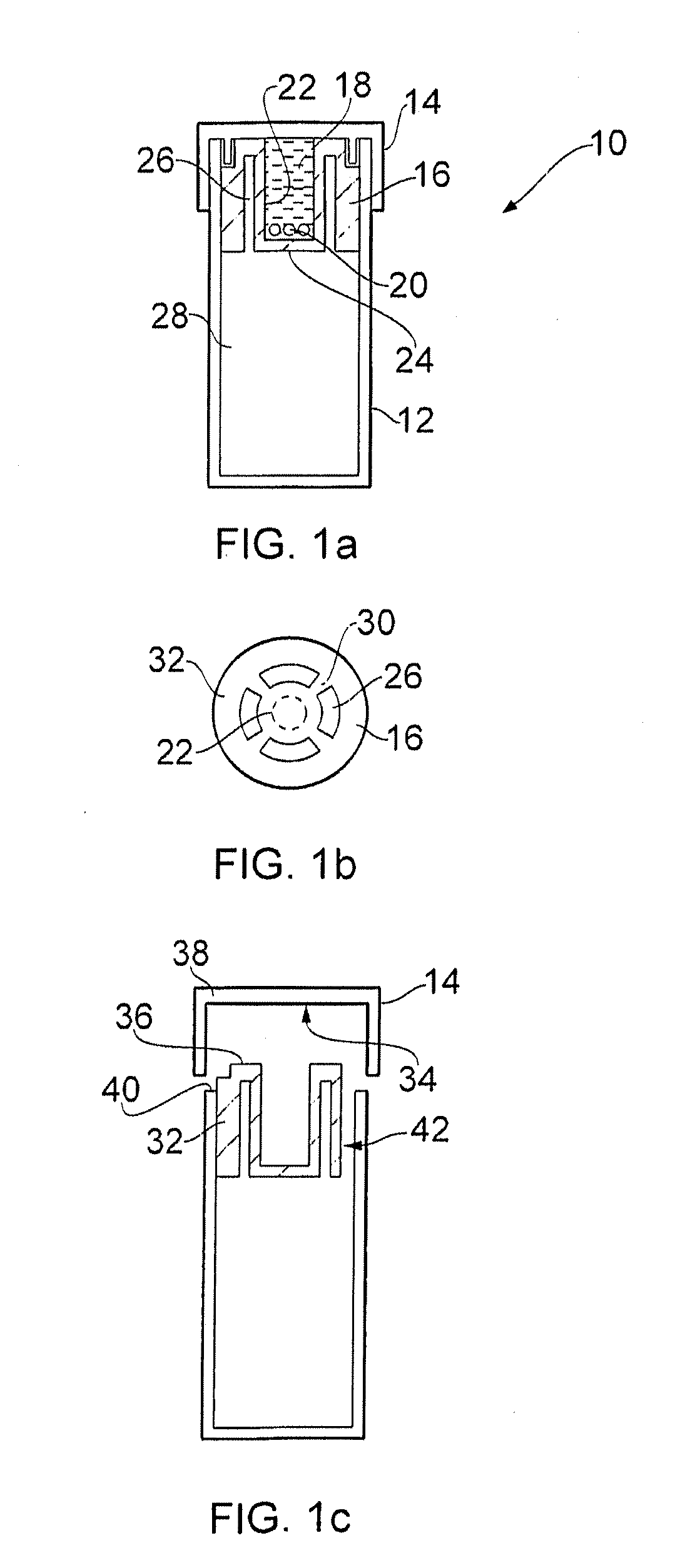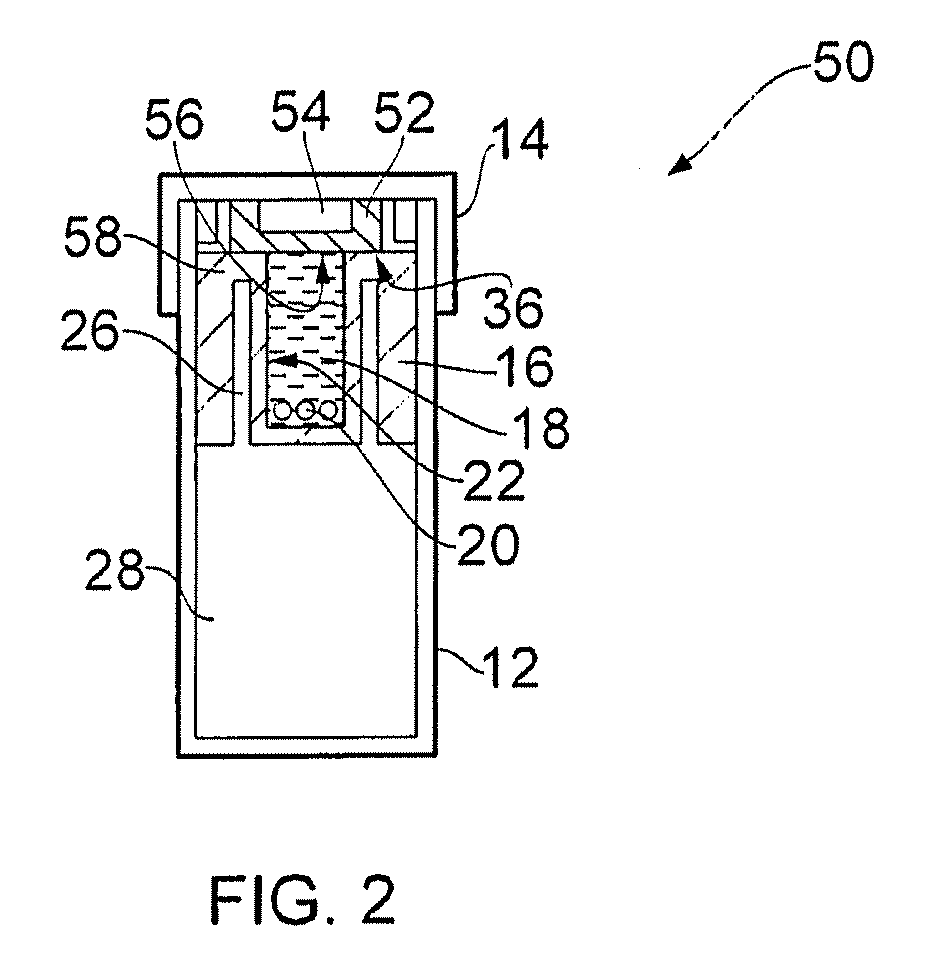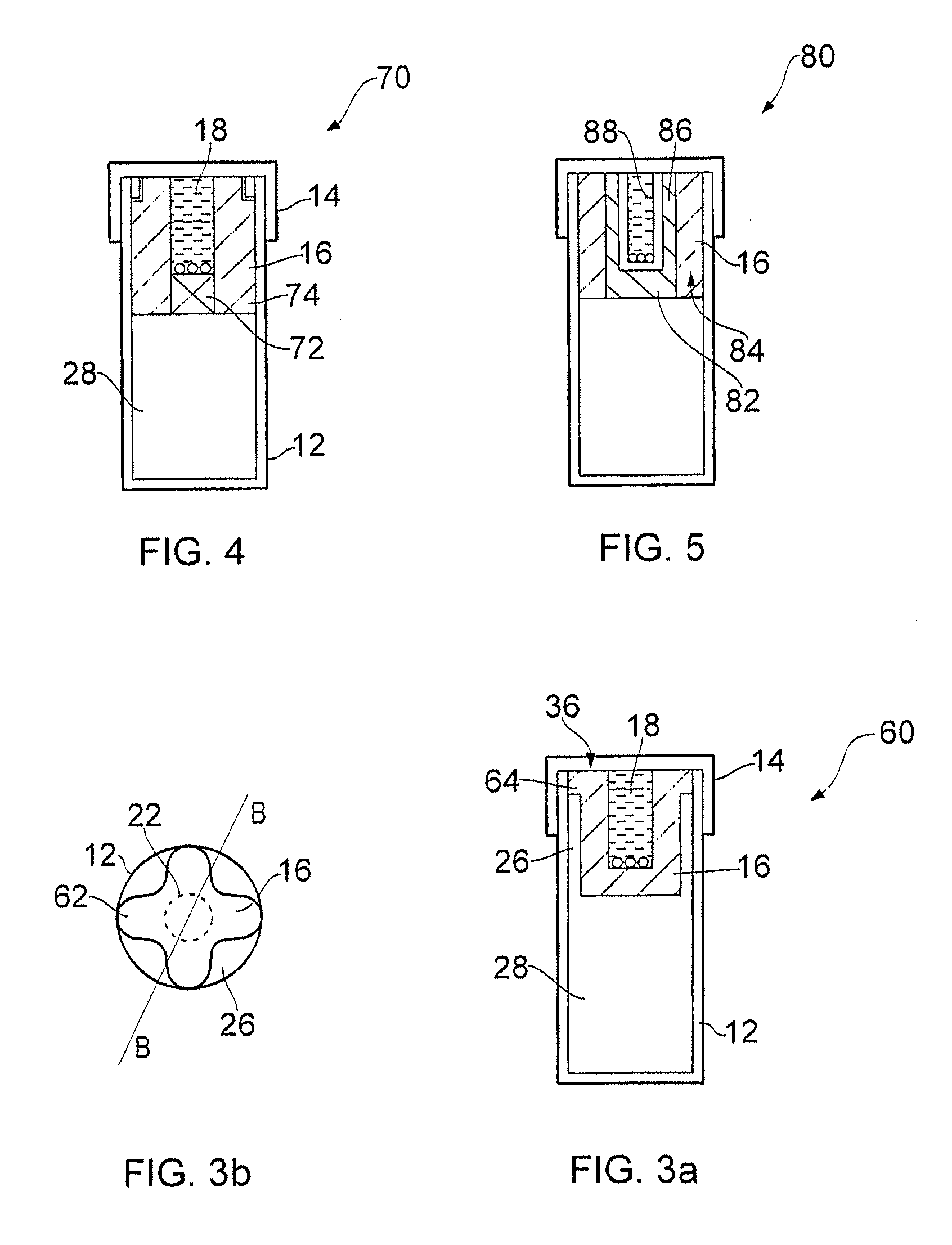Apparatus and methods for culturing and/or transporting cellular structures
a technology of cellular structure and apparatus, which is applied in the field of apparatus and methods for culturing and/or transporting cellular structures, can solve the problems of system unsuitability for embryo or oocyte transport, gas transport to embryos or oocytes, and development of hypoxic environment around some or all of the embryos
- Summary
- Abstract
- Description
- Claims
- Application Information
AI Technical Summary
Benefits of technology
Problems solved by technology
Method used
Image
Examples
example 1
[0133]A container as in FIG. 1a was designed to culture 50 embryos in a 5% oxygen, 5% carbon dioxide atmosphere for 72 hr. The container used as housing 12 a 7 ml capacity polystyrene Bijou vial (Bibby Sterilin, product code 129A) with an externally threaded screw cap. The insert 16 was moulded in Silastic S PDMS (Dow Corning) mixed in the standard ratio according to the supplier's instructions. The media space 18 was of diameter 7 mm, height 13 mm to give a volume of 500 μl, suitable for 50 embryos at 10 μl media per embryo. The walls 22 and base 24 were 1.5 mm thick and the gas channels 26 were 1.5 mm across in the radial direction, extended to 1 mm short of the surface 36 and occupied 50% of the circumference on which they were situated.
[0134]The insert was sized to be an interference fit with the wall of the vial and on filling the media space with 500 μl media, fitting the cap forced the insert down into the vial and provided leak free sealing of the media space.
Total Oxygen De...
example 2
[0146]A container as in FIG. 2 was designed to culture 50 embryos in a 5% O2, 5% CO2 atmosphere for 72 hr.
[0147]The lid component 52 was designed to augment dissolved oxygen availability at a group of embryos resting on the lid when the container is upside down. Availability of sufficient flux of dissolved oxygen at a group at the centre of the lid means that at least this amount will be available at a position towards the edge of the lid, for example when the container is upside down and tilted away from vertical.
[0148]The flux contribution through the PDMS lid is modelled by calculating the sum of diffusional impedances (i) through the annulus represented by the PDMS in region 58 in FIG. 2, (ii) radially through the bulk of the PDMS lid component to an inner radius equal to the thickness of the lid component and (iii) hemispherical diffusion from the edge of the cylinder bounded by that inner radius to the disc on which the embryos rest. In the example the gas channels are taken t...
example 3
[0150]The gas channels 26 are closed by the rim 64 and so diffusion via this route, while non-zero, will be negligible compared with through a vent channel 66. The channel 66 in FIG. 3c extends the length of the insert 16 in order to present the maximum resistance to diffusion. Change of composition of the gas in the gas space is an exponential process as described above, with time constant tau=V.1 / (D.A), where V is the volume of the gas space, D is the diffusion coefficient of the gas of interest (carbon dioxide here, D=0.16 cm2.s-1 in air at 20 C), 1 and A are the length and areas of the substantially rectangular cross-section channel. For typical dimensions: V=5.3 cm2; A=0.01 cm2 and 1=1 cm, tau=55 minutes and the time for a fall in carbon dioxide concentration in the gas space from 5% to 4.8% is around 2 minutes, which is an adequate performance for the design. If the time is required to be longer, the channel area can be smaller or the volume V larger.
PUM
 Login to View More
Login to View More Abstract
Description
Claims
Application Information
 Login to View More
Login to View More - R&D
- Intellectual Property
- Life Sciences
- Materials
- Tech Scout
- Unparalleled Data Quality
- Higher Quality Content
- 60% Fewer Hallucinations
Browse by: Latest US Patents, China's latest patents, Technical Efficacy Thesaurus, Application Domain, Technology Topic, Popular Technical Reports.
© 2025 PatSnap. All rights reserved.Legal|Privacy policy|Modern Slavery Act Transparency Statement|Sitemap|About US| Contact US: help@patsnap.com



